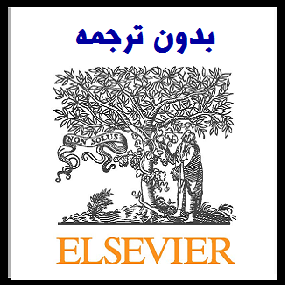مقاله انگلیسی پیش بینی تراکم لرزه ای ماسه اشباع با توجه به ویژگی های حرکت زمین (2020 الزویر)


| عنوان فارسی مقاله | پیش بینی تراکم لرزه ای ماسه اشباع با توجه به ویژگی های حرکت زمین و نفوذپذیری متغیر |
| عنوان انگلیسی مقاله | Prediction of seismic compression of saturated sand considering the ground motion characteristics and variable permeability |
| ترجمه کامپیوتری فهرست مطالب | طرح کلی نکات برجسته چکیده کلید واژه ها 1. معرفی 2. مدل سازنده 3. اصلاح پارامترهای مدل و اعتبار سنجی تست سانتریفیوژ 4- نتایج و تجزیه و تحلیل 5. نتیجه گیری ها اعلان منافع رقابتی تقدیرنامه ها پیوست A. داده های تکمیلی نشانه گذاری داده های تحقیق منابع |
| فهرست مطالب | Outline Highlights Abstract Keywords 1. Introduction 2. Constitutive model 3. Modification of model parameters and validation of centrifuge test 4. Results and analysis 5. Conclusions Declaration of competing interest Acknowledgments Appendix A. Supplementary data Notation Research Data References |
| نمونه ترجمه کامپیوتری | چکیده
ابتدا یک مدل عددی پرتو برشی یک بعدی برای محاسبه فشرده سازی لرزه ای در سایت ماسه ای آزاد با اشباع با استفاده از برنامه OpenSees ایجاد شد. بر اساس مدل ایجاد شده ، با معرفی یک مدل ضریب نفوذپذیری متغیر ، تأثیر ضریب نفوذپذیری در حل و فصل ناشی از مایع ماسه اشباع شده بررسی شده است. مدل اصلاح شده با مقایسه نتایج حاصل از آزمون مدل سانتریفیوژ تأیید شد. همبستگی بین فشرده سازی لرزه ای و پارامترهای بار لرزه ای مورد بررسی قرار گرفت ، و یک عملکرد پیش بینی مبتنی بر شدت طیف سرعت (VSI) برای تخمین فشرده سازی ماسه اشباع با در نظر گرفتن هر دو ویژگی حرکت لرزه ای و خصوصیات شن و ماسه ارائه شده است. نتایج نشان می دهد که مدل نفوذپذیری متغیر اصلاح شده به طور قابل توجهی صحت نتایج شبیه سازی را بهبود می بخشد. جهت حرکت لرزه ای تأثیر معنی داری بر فشرده سازی لرزه ای و فشار زیاد منافذ آب ماسه دارد و ساده سازی استفاده از بار تک بعدی در جهت معینی برای نمایانگر بارهای دو بعدی ، کمترین فشرده سازی لرزه ای ماسه ها را کاهش می دهد. عملکرد پیش بینی مبتنی بر VSI پیشنهادی وسیله ای برای برآورد فشرده سازی لرزه ای ماسه اشباع است و با افزایش تراکم نسبی ماسه ، دقت پیش بینی بهبود می یابد. 1. مقدمه انحلال ماسه اشباع پدیده ای شایع در زمین لرزه ها است که اغلب منجر به تغییر شکل جانبی ، فشرده سازی لرزه ای و جوش شن می شود. فشرده سازی لرزه ای ذخایر شنی اشباع تقریباً در همه زمین لرزه های قوی مشاهده شد. برای سایت های ماسه ای افقی زمینه های افقی ، فشرده سازی لرزه ای عمدتاً توسط فشار حجمی ایجاد می شود و منجر به تسویه زمین می شود. شبیه سازی عددی و آزمایش های آزمایشگاهی به طور گسترده ای برای بررسی تغییر شکل شن های اشباع در هنگام بارگذاری زلزله استفاده می شود. با این حال ، پیدا شده است که فشرده سازی لرزه ای ماسه اشباع تعیین شده از طریق شبیه سازی عددی کوچکتر از مشاهدات میدانی و آزمایش مدل است [1،2]. این نتیجه عدم دستیابی به رفتارهای پیچیده مایع مایع مایع اشباع شده با استفاده از مدل سازنده فعلی در شبیه سازی عددی است (به عنوان مثال آندریانوپولوس و همکاران [1] ، الگامال و همکاران [3] ، بولانگر و همکاران [4] ] ، ژانگ و همکاران [5]). در واقع ، این پدیده را می توان به لحاظ نظری با مکانیسم حل و فصل ماسه اشباع توضیح داد. جعفرزاده و یاناگیزاوا [6] یک سری آزمایشات جدول لرزهای یک طرفه را برای بررسی محل استقرار ستونهای ماسه اشباع در شرایط مختلف انجام دادند و دریافتند که ضریب نفوذپذیری متوسط در هنگام تحریک لرزه ای 5-6 برابر از استاتیک آن (قبل از لرزش) است. ) ارزش. Arulanandan و Sybico [7] افزایش ضریب نفوذپذیری ماسه های اشباع شده در حالت مایع سازی را به تغییرات پارچه ذره نسبت دادند. تماس بین ذرات خاک در حین مایع سازی تضعیف می شود ، که منجر به کانال های بیشتر جریان برای آب منافذ شده و منجر به افزایش ضریب نفوذپذیری ماسه ها می شود. شهیر و همکاران. توجه؛ (این ترجمه توسط نرم افزار انجام شده و ویرایش نشده است و احتمال وجود اشتباه در آن وجود دارد. در صورت ثبت سفارش، ترجمه توسط مترجمین مجرب انجام خواهد شد. برای مشاهده نمونه ترجمه های تخصصی و اخیر مترجمین جهت اطمینان از کیفیت ترجمه، اینجا کلیک نمایید.) |
| نمونه مقاله انگلیسی |
Abstract A one dimensional shear beam numerical model was firstly established to calculate the seismic compression in free-field site of saturated sand by using OpenSees program. Based on the established model, the influence of permeability coefficient on the liquefaction-induced settlement of saturated sand was investigated by introducing a variable permeability coefficient model. The modified model was verified by comparison with results from centrifuge model test. The correlation between seismic compression and seismic load parameters was studied, and a velocity spectrum intensity (VSI) based prediction function was proposed to estimate the compression of saturated sand by considering both the characteristics of seismic motion and the sand properties. The results show that the modified variable permeability model significantly improves the accuracy of the simulation results. Direction of seismic motion has a significant effect on the seismic compression and excess pore water pressure of sand, and the simplification of using one-dimensional load in a certain direction to represent the two-dimensional loads underestimates the seismic compression of sands. The proposed VSI-based prediction function provides a means for estimating seismic compression of saturated sand, and the prediction accuracy improves with increasing the relative density of sand. 1.Introduction Liquefaction of saturated sand is a common phenomenon in earthquakes, which often leads to lateral deformation, seismic compression and sand boils. Seismic compression of saturated sandy deposits was observed in almost all strong earthquakes. For horizontal free-field sand sites, seismic compression is mainly caused by volumetric strain, and results in ground settlement. Numerical simulation and laboratory tests are widely used to study the deformation of saturated sand during earthquake loading. However, it is found that the seismic compression of saturated sand determined through numerical simulation is smaller than that of field observations and model tests [1,2]. This is the result of failure to capture the complex behaviors of liquefaction of saturated sands using the current constitutive model in the numerical simulation (e.g., Andrianopoulos et al. [1], Elgamal et al. [3], Boulanger et al. [4], Zhang et al. [5]). As a matter of fact, this phenomenon can be theoretically explained by the settlement mechanism of saturated sand. Jafarzadeh and Yanagisawa [6] conducted a series of unidirectional shaking table tests to study the settlement of saturated sand columns in various conditions, and they found that the average permeability coefficient during seismic excitation is 5–6 times greater than its static (pre-shaking) value. Arulanandan and Sybico [7] attributed the increase of the permeability coefficient of saturated sands in liquefaction state to the changes of particle fabric. The contacts between soil particles are weaken during liquefaction, which results in more flow channels for the pore water and leads to the increase of permeability coefficient of the sand. Shahir et al. |
| سال انتشار | 2020 |
| ناشر | الزویر (ساینس دایرکت) (Elsevier – Science Direct) |
| مجله | مجله |
| نوع مقاله | ISI |
| کلمات کلیدی | ضریب نفوذپذیری ویژگی های حرکات لرزه ای فشرده سازی لرزه ای ماسه اشباع چگالی نسبی OpenSee تحلیل عددی |
| کلمات کلیدی انگلیسی |
Permeability coefficient
Seismic motion characteristics
Seismic compression of saturated sand
Relative density
OpenSees
Numerical analysis
|
| صفحات مقاله انگلیسی | 11 |
| مناسب برای رشته | مهندسی عمران |
| مناسب برای گرایش | زلزله، ژئوتکنیک |
| توضحیات | این مقاله انگلیسی جدید بوده و تا کنون ترجمه نشده است. جهت ثبت سفارش ترجمه از لینکهای زیر استفاده نمایید. |
| دانلود مقاله انگلیسی | ○ دانلود رایگان مقاله انگلیسی با فرمت pdf (کلیک کنید) |
| سفارش ترجمه فارسی | ○ سفارش انجام ترجمه و تایپ این مقاله (کلیک کنید) |
| سایر مقالات این رشته | ○ مشاهده سایر مقالات رشته مهندسی عمران (کلیک کنید) |




